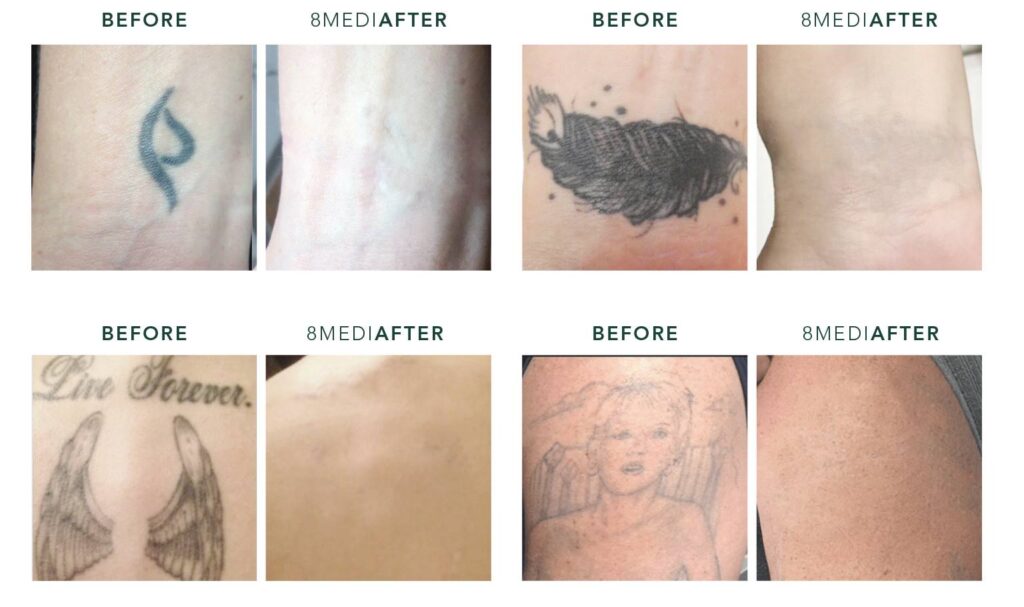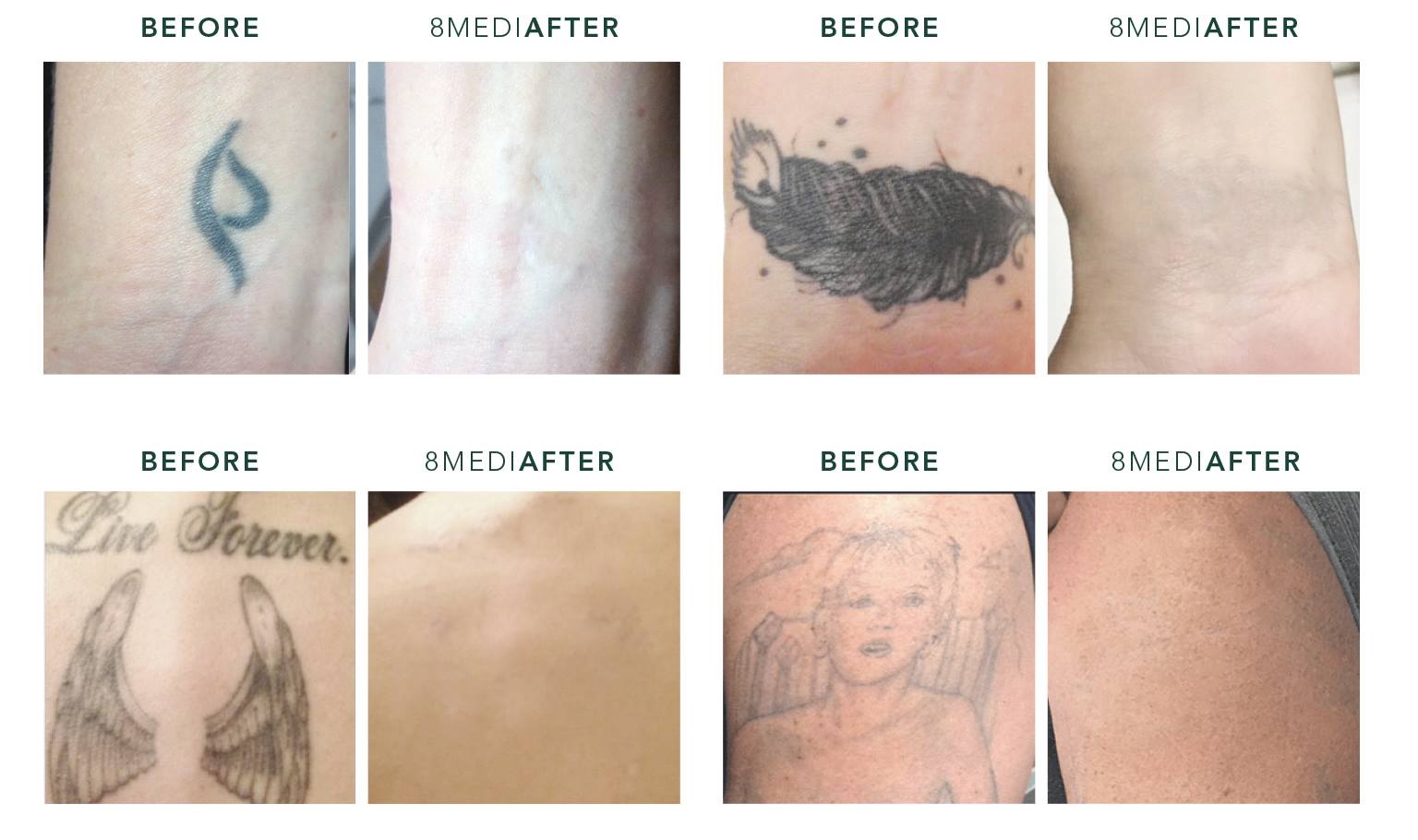
How Much Does It Cost to Remove a Small Tattoo? A Comprehensive Guide
Getting a tattoo is a significant decision, and while many people cherish their ink for life, others may eventually regret their choices. Perhaps a youthful impulse, a change in personal taste, or professional considerations lead to the desire for tattoo removal. If you’re considering erasing a small tattoo, one of the first questions that likely comes to mind is: how much to remove a small tattoo?
The cost of tattoo removal isn’t a simple, one-size-fits-all answer. Several factors influence the final price, making it crucial to understand the variables involved before committing to the process. This comprehensive guide will break down the costs associated with removing a small tattoo, exploring the different methods, factors that affect pricing, and what to expect during the removal process. We’ll also examine some alternatives and financing options to help you make an informed decision.
Understanding Tattoo Removal Methods
Before diving into the costs, it’s essential to understand the primary methods used for tattoo removal. While various techniques exist, laser tattoo removal is the most common and effective method, especially for smaller tattoos. Other methods, like surgical excision and dermabrasion, are less frequently used due to potential scarring and limited effectiveness on certain tattoo types.
Laser Tattoo Removal
Laser tattoo removal works by emitting short pulses of intense light that break down the tattoo ink into smaller particles. These particles are then naturally eliminated by the body’s immune system over time. Different lasers are used depending on the ink colors present in the tattoo. For example, Q-switched lasers are commonly used and are effective on a wide range of ink colors.
The number of sessions required for complete removal varies depending on several factors, including the tattoo’s size, ink colors, location on the body, and the individual’s skin type. Small, simple tattoos with darker inks generally require fewer sessions than larger, more complex tattoos with multiple colors.
Surgical Excision
Surgical excision involves cutting out the tattooed skin and stitching the remaining skin together. This method is generally suitable only for very small tattoos because it can leave a scar. While it removes the tattoo in a single session, it’s not ideal for larger tattoos or tattoos located in areas where scarring is a concern.
Dermabrasion
Dermabrasion involves sanding down the top layers of skin with a rotating abrasive tool. This method is less precise than laser removal and carries a higher risk of scarring and pigmentation changes. It’s generally not recommended for tattoo removal, especially when laser technology is available.
Creams and Other Over-the-Counter Products
While numerous creams and lotions claim to remove tattoos, these products are generally ineffective and can even be harmful. They may lighten the tattoo slightly, but they rarely, if ever, completely remove it. Moreover, some of these products can cause skin irritation, allergic reactions, and permanent scarring. It’s best to avoid these products and opt for a proven method like laser tattoo removal.
Factors Affecting the Cost of Small Tattoo Removal
Several key factors influence the overall cost of removing a small tattoo. Understanding these factors can help you estimate the potential expenses and plan accordingly.
Tattoo Size
The size of the tattoo is one of the most significant factors affecting the cost. Larger tattoos naturally require more time and laser energy to treat, resulting in higher prices per session. However, since we’re focusing on how much to remove a small tattoo, the cost will generally be lower compared to larger pieces.
Ink Colors
Different ink colors respond differently to laser treatment. Black and dark blue inks are the easiest to remove, while lighter colors like green, yellow, and white can be more challenging and require more sessions. Multi-colored tattoos will generally cost more to remove than tattoos with a single color.
Tattoo Age and Ink Density
Older tattoos tend to be easier to remove than newer ones because the ink has already started to fade naturally over time. The density of the ink also plays a role; tattoos with heavily saturated ink may require more sessions to break down the pigment effectively.
Location of the Tattoo
The location of the tattoo on the body can also affect the cost. Tattoos located closer to the heart tend to fade faster due to better blood circulation, which aids in the removal of ink particles. Tattoos on extremities like hands and feet may require more sessions.
Skin Type
Individuals with lighter skin tones generally respond better to laser tattoo removal than those with darker skin tones. Lasers target the pigment in the tattoo ink, but they can also affect the melanin in the skin. Technicians must adjust the laser settings to minimize the risk of pigmentation changes, which may require more conservative treatments and more sessions.
Number of Sessions Required
The number of sessions needed for complete tattoo removal varies from person to person. On average, small tattoos may require between 3 to 8 sessions, spaced several weeks apart to allow the skin to heal between treatments. Each session incurs a cost, so the total number of sessions significantly impacts the overall expense. The cost to remove a small tattoo will be significantly lower if fewer sessions are needed.
Clinic and Technician Expertise
The reputation and expertise of the clinic and the technician performing the laser tattoo removal can also influence the price. Experienced and qualified technicians may charge more per session but can also provide more effective and safer treatments, potentially reducing the overall number of sessions needed. Choosing a reputable clinic with certified professionals is crucial to minimize risks and achieve the best possible results.
Average Costs for Removing a Small Tattoo
So, how much to remove a small tattoo in actual dollar figures? While the exact cost varies depending on the factors mentioned above, here’s a general overview of the average prices you can expect to pay:
- Per-session cost: The average cost per laser tattoo removal session ranges from $200 to $500. Some clinics may offer package deals for multiple sessions, which can help reduce the overall cost.
- Small tattoo removal cost: For a small tattoo (e.g., 2×2 inches), you can expect to pay between $600 to $4000 for complete removal, depending on the number of sessions required. Remember that this is just an estimate, and the actual cost may vary.
It’s essential to consult with a qualified laser tattoo removal technician for a personalized assessment and a more accurate cost estimate. They can evaluate your tattoo, skin type, and other relevant factors to provide a tailored treatment plan.
Financing Options and Cost-Saving Tips
Tattoo removal can be a significant investment, so exploring financing options and cost-saving tips can make the process more affordable.
- Package deals: Many clinics offer discounted package deals for multiple sessions. Inquire about these options to potentially save money on the overall cost.
- Financing plans: Some clinics offer financing plans or payment options that allow you to spread the cost of tattoo removal over time. This can make the treatment more accessible if you’re on a budget.
- Groupon and other deals: Keep an eye out for deals and promotions on websites like Groupon. However, be sure to research the clinic and technician thoroughly before committing to any treatments.
- Consultation specials: Some clinics offer free or discounted consultations. Take advantage of these opportunities to get a personalized assessment and cost estimate without breaking the bank.
Alternatives to Laser Tattoo Removal
While laser tattoo removal is the most effective method, some individuals may explore alternative options, especially if they are concerned about cost or potential side effects.
- Tattoo cover-ups: Covering an unwanted tattoo with a new design is a popular alternative. This option can be more affordable than tattoo removal, but it requires finding a skilled artist who can create a design that effectively conceals the old tattoo.
- Fading creams: As mentioned earlier, fading creams are generally not effective for complete tattoo removal. However, they may lighten the tattoo somewhat, making it less noticeable. These creams should be used with caution, as they can cause skin irritation and allergic reactions.
What to Expect During the Removal Process
Understanding what to expect during the laser tattoo removal process can help alleviate any anxiety and ensure a smooth experience.
- Consultation: The first step is to schedule a consultation with a qualified technician. During the consultation, they will evaluate your tattoo, skin type, and medical history to determine the best treatment plan.
- Treatment sessions: During each session, the technician will use a laser to target the tattoo ink. You may experience a sensation similar to a rubber band snapping against your skin. Topical numbing cream can be applied to minimize discomfort.
- Aftercare: After each session, it’s crucial to follow the technician’s aftercare instructions carefully. This may include applying a topical ointment, keeping the treated area clean and covered, and avoiding sun exposure.
- Results: Tattoo fading will occur gradually over time, between sessions. It’s important to be patient and realistic about the results. Complete removal may take several months or even years, depending on the factors discussed earlier.
Potential Risks and Side Effects
Like any cosmetic procedure, laser tattoo removal carries some potential risks and side effects. These can include:
- Skin discoloration: The treated area may become lighter or darker than the surrounding skin. This is usually temporary but can be permanent in some cases.
- Scarring: While laser tattoo removal is generally safe, there is a risk of scarring, especially if the aftercare instructions are not followed properly.
- Infection: There is a risk of infection if the treated area is not kept clean and protected.
- Blistering: Blisters are a common side effect of laser tattoo removal. They usually heal on their own but should be kept clean and protected to prevent infection.
Choosing a reputable clinic with experienced technicians can minimize these risks and ensure a safe and effective tattoo removal process.
Making an Informed Decision
Deciding to remove a tattoo is a personal choice, and it’s essential to weigh the costs, benefits, and risks carefully. Understanding how much to remove a small tattoo is just one piece of the puzzle. Consider your reasons for wanting to remove the tattoo, your budget, and your expectations for the results. Consulting with multiple clinics and technicians can help you gather information and make an informed decision that’s right for you.
Ultimately, the cost of tattoo removal is an investment in your confidence and well-being. By understanding the factors that influence pricing and exploring your options, you can make the process more affordable and achieve the desired results.
[See also: Laser Tattoo Removal vs. Cover-Up Tattoos]
[See also: Finding a Reputable Tattoo Removal Clinic]
[See also: Aftercare Tips for Tattoo Removal]

